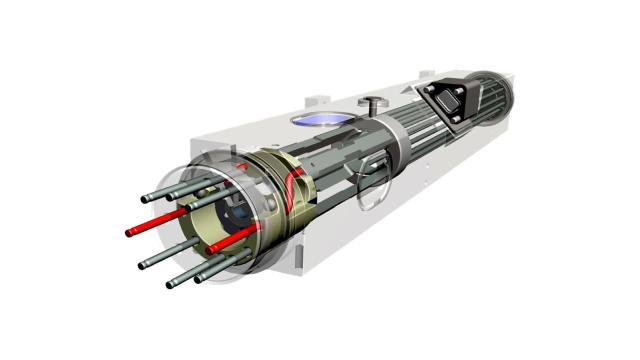On June 23, NASA will send an atomic clock the size of a football (though much heavier) to space onboard a SpaceX Falcon Heavy rocket.
This clock isn’t for telling time—it’s a technology demonstration for a clock that might be used for future space exploration, both to navigate and to make gravitational measurements. If successful, it will be the most accurate atomic clock ever flown in space.
Currently, space exploration is a two-way process. Spacecraft send information to an array of antennae on the ground and on to navigators, who use atomic clocks on Earth to coordinate the time and send navigational instructions back to the craft. But if the spacecraft had an accurate atomic clock onboard, it could determine its own timing and navigation data without relying on Earthbound atomic clocks. The Deep Space Atomic Clock (DSAC) is a test of such a clock that will eventually allow for streamlined navigation, in which the spacecraft can receive instructions without having to wait for number-crunching back on Earth.
Switching from two-way to one-way navigation could “significantly alleviate the tracking burden on ground based assets,” according to one 2016 paper.
On top of that, clocks are important tools for scientific research. Time passes more slowly in strong gravitational fields, and so atomic clocks can be used to measure the effects of gravity.
The clock is sort of like a ticking watch with a very diligent system that ensures the tick stays accurate. A quartz crystal in an electric field creates a regular oscillating electrical signal, which is then converted to approximately the frequency at which mercury atoms undergo a kind of atomic transition. This electrical signal is passed along to the mercury ions, trapped in electric fields, which in turn begin to vibrate, providing an exact value for the frequency of the transition. The clock uses this to correct the approximate frequency and provide a reliable frequency standard. This can be converted into a once-per-second tick that doesn’t waver.
But unlike stationary atomic clocks on Earth that can be shielded from the outside world with as much equipment as would be required, the DSAC must overcome elements that could influence the behaviour of its atoms or its oscillator. Such unwanted influences include electromagnetic fields from the machinery used to keep the spacecraft steady, as well as the changing temperatures and magnetic fields of deep space. A series of magnets and built-in shielding are included to keep the clock steady and keep these outside effects out of the chambers that hold the clock mechanism.
The clock will then pass the tick along to a GPS receiver in orbit around Earth, which will send it back to the ground where scientists can compare the clock’s output with Earth-based atomic clocks to ensure that it works.
If successful, the clock will be the most precise atomic clock flown in space. On the ground, it was 50 times more stable than GPS satellites’ atomic clocks, losing just one second every 9 million years, according to a NASA release.
Ultimately, the experiment is just a demonstration. But if successful, it could lead to important advances in navigation and ultimately allow for astronauts to travel deeper into space.
